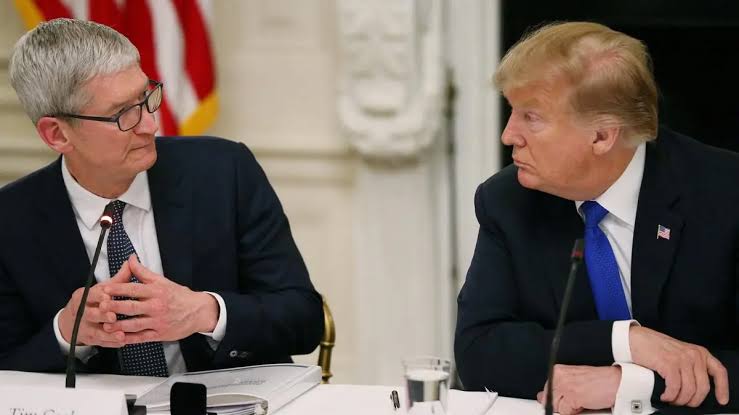With US–India trade tensions escalating after the White House’s unveiling of new tariffs on Indian imports, global tech giant Apple finds itself largely insulated according to official statements cited today by CNBC. Here’s a detailed, top-to-bottom newsletter covering every corner of this fast-evolving story.
Apple’s Indian Exports Escape Tariff Net
On August 6, 2025, White House officials confirmed to CNBC that Apple’s exports of iPhones and other devices from India will remain unaffected by the steep new tariffs imposed on Indian imports. While President Trump doubled down, escalating tariffs amid geopolitical friction linked to India’s continued purchase of Russian oil, Apple appears to have secured crucial carve-outs—at least for now.
Key Takeaways
Apple’s iPhones assembled in India are exempt from Washington’s new 25–50% tariffs on Indian imports, due to specific exclusions granted to smartphones and computers in recent reciprocal tariff lists.
India has become Apple’s primary production hub beyond China, supplying the majority of iPhones sold in the US market lately.
These exemptions arise from an ongoing US Commerce Department investigation under Section 232, as smartphones and key electronics are considered critical to national security and are temporarily shielded.
India’s Rising Role in Apple’s Global Supply Chain
India now accounts for over 20% of global iPhone output and has recently overtaken China as the leading supplier of iPhones to the United States. This shift has been deliberate: Apple’s post-pandemic supply chain strategy focused on diversification away from China, increasing investments and ramping up manufacturing in India aligned with the country’s ‘Make in India’ initiative.
Expansion Highlights
Between March and May 2025, $3.2 billion worth of iPhones exported from Indian facilities, with over 97% destined to the US.
The Indian government eagerly promotes Apple’s growing domestic investments, citing them as magnets for further global manufacturing partnerships.
Why Is Apple Exempt? The Mechanics Behind the Policy
The Trump administration in April 2025 announced tariffs covering a broad array of Indian imports but strategically excluded sectors like smartphones and computers. This policy aims to prevent disruptions to American tech supply lines, given the US currently lacks large-scale domestic manufacturing for these electronics.
Section 232 Review
Ongoing probes under Section 232 of the US Trade Expansion Act are evaluating longer-term import rules for vital categories, including technology.
Until these investigations finish, iPhones and similar devices enjoy a reprieve from new duties.
What Could Change? Uncertainty Lingers
Despite Apple’s current exemption, both governments are engaged in talks and the US administration is reviewing further trade actions. Industry sources indicate that should the Section 232 investigation conclude with less favorable outcomes, Apple’s India-made devices may eventually lose their protected status—potentially leading to price spikes or further supply shifts.
Strategic Implications for Apple and the Industry
Cost-Benefit Stability: For now, manufacturing iPhones in India remains cost-competitive, even as trade winds shift. Analysts suggest that Apple’s long-term contracts and political lobbying make it less vulnerable than smaller electronics firms.
US–India Relations: The exclusion underscores Apple’s strategic significance in cross-border industry and technology diplomacy, even as Washington and New Delhi spar over broader geopolitical issues.
Policy and Market Outlook
Markets today saw Apple shares advance on the news that its US–India operations will avoid immediate financial harm from tariff escalation. However, corporate and policy leaders alike signal that continued vigilance is necessary with trade reviews ongoing and exemptions not guaranteed indefinitely.
In Summary: At this hour, Apple’s India-to-US electronics pipeline remains intact, confirming CNBC’s report citing White House officials. But with bilateral relations under strain and further White House moves possible, both investors and iPhone buyers should watch closely—the trade tides could yet shift swiftly.
Source: CNBC








